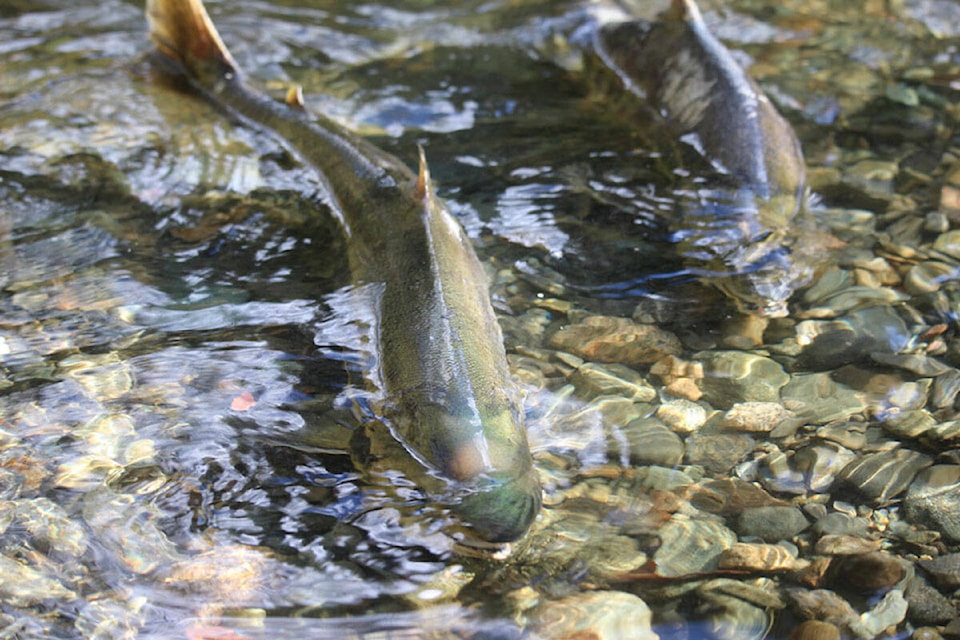This fall millions of salmon will migrate from the high seas of the north Pacific Ocean back home to B.C.’s rivers and streams.
Thanks to a new interactive online map, you can now catch a glimpse of one of nature’s most spectacular wonders near your community.
The Pacific Salmon Foundation (PSF) launched its interactive salmon spotting map on Sept. 1. following a successful pilot of the project last fall.
“The opportunity to observe the journey and life cycle of Pacific salmon is nothing short of spectacular,” Michael Meneer, Pacific Salmon Foundation president and chief executive officer, said in a release.
Every year, from late summer to early winter in B.C., Pacific salmon – Chinook, coho, sockeye, pink and chum – return to creeks, streams and rivers to reproduce.
Pacific salmon are anadromous – meaning they’re born in freshwater rivers and migrate to the ocean, where they spend several years feeding and growing, before ultimately returning to their natal streams as adults to spawn and die.
On the return home, adult salmon can cover immense distances, some more than 3,000 kilometres, to reach their spawning grounds. That’s almost equivalent to driving halfway across Canada.
Salmon also face competition, predators and environmental impediments along the way, making their journey all the more remarkable.
PSF’s newly launched map shows some of the best publicly accessible locations in the province to see the salmon in action. It contains over 70 family-friendly locations with clearly marked trails and public viewing areas across Metro Vancouver, Fraser Valley, Sea-to-Sky, Vancouver Island, Sunshine Coast, Southern Interior, Northern B.C. and Yukon – complete with salmon spotting and safety tips.
“Seeing salmon in our own communities emboldens us to take action and do everything in our power to take care of this iconic species,” Meneer added.
Opportunities to view the salmon spawn are expected to be particularly wondrous this year as well. That’s because it’s a dominant year for Fraser River sockeye, which return in greater numbers every four years.
Check out the map at psf.ca/salmonspotting.
ALSO READ: Arctic Ocean acidifying up to four times faster than any other sea on Earth
ALSO READ: Southern resident killer whale population falls to 73: U.S. researchers
Do you have a story tip? Email: austin.westphal@saanichnews.com. Follow us on Twitter and Instagram, and like us on Facebook.



